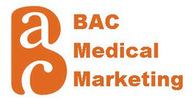First, take a look at the reasons you might be experiencing a dwindling practice. There are likely to be a number of reasons. Often the referral base you depend on today is the same one of 30 years ago, but not all of those physicians are still around, some have relocated and others have retired. At the same time, word of mouth referrals decline as your own patients age. You will lose some due to death and others move out of the area for various reasons. Add to this the patients that have switched to managed care plans you don’t belong to and the shrinkage becomes obvious. Solo practices are particularly vulnerable, as some managed care plans will only contract with group practices.
Once you look at the factors involved in the practice decline, you can explore various remedies.
Begin by developing relationships with young physicians that are entering your community. They need seasoned physicians to break into the medical community and to support them in the community at large. New primary care physicians want to know which specialists to send their patients to. They will gain confidence in your ability to treat their patients from both a personal and a clinical point of view once you open the lines of communication and strengthen the relationship. Younger specialists need to know as much as they can about the primary care physicians that serve the community, especially those that have been in practice for an extended period of time. They will appreciate your knowledge of the community and the politics of medicine.
Look to the medical staff office at your hospital for a roster of new staff members. Develop an approach to become familiar with the new doctors in town. If there are only a few, your job will be simple. If there are many, you will need to set a goal on how many you want to contact each month and what criteria you will use to prioritize the list.
Meet personally with each physician you have targeted, whether it be the specialty group or the primary care physicians. Invite them for a business lunch or perhaps to join you at a local Medical Society meeting to introduce them to other members of the medical community. Explore his or her personal and professional interests and begin to develop a profile on each physician.
For those that have a sports interest you share, invite them for a round of golf or to attend a sporting event of interest. For those with similar family interests, you may want to ask them to join you for a community picnic or annual event.
Your spouse may be helpful in nurturing relationships, as well. For example, both spouses may be interested in community service work, or education, or have their own private businesses. Whatever the commonality, be sure to make that connection active by introducing them and encouraging the relationship.
Stay actively involved in hospital activities and committee work, and use this as a source to work in tandem with some of the newer physicians. Hospital Grand Rounds and committee involvement can pay off big dividends in connecting with newer doctors.
It is also very effective to tap into the media. Contact the health and medicine editor of your local newspaper. Inquire about a possible by-line and invite the editors to call you for an interview whenever a hot health care topic is ready to hit the news.
It is also a good idea to develop a practice business portfolio. It should include a black and white press photo, your curriculum vitae, a copy of any recent by-line articles and a list of areas you have specialized expertise and knowledge in. You might also include a list of lectures you are willing to conduct for community groups. Such a portfolio is good for contacting both the media and community organizations.
The business portfolio is helpful in opening doors to get on a radio talk show, as well. We tend to think that they won’t be interested, but our experience proves they are most likely to welcome physicians who have something to say. It’s important to be prepared before you make the contact. Decide on a couple of relevant current health care issues you can speak about. Then set up an appointment or a telephone conference to discuss this. If it is a telephone conference, you should send your business portfolio in advance. If it is a meeting, bring it with you. Remember to be as personable as possible.
Use these tried and true tips and you will begin to see your practice reap the benefits. It can also help to encourage your office manager to be active in community organizations. Pay her fees to join a local service group as your representative and to volunteer you as a program speaker. Also encourage your office manager to become active in local chapters of practice management organizations such as the Professional Association of Health Care Office Managers (PAHCOM) or Medical Group Management Association (MGMA). If there aren’t chapters of the organizations in your community, by all means encourage your practice manager to establish one. Contact with other office managers is vital to keeping your practice alive.
If you need help into these ideas into action or exploring other ways to jump start your practice, call BAC Medical Marketing. We will make it a top priority and help you obtain the results you want.
The most important asset in your practice is the people. This includes you and your staff, as well as the patients. Be sure your service is superior and that you and everyone working for you are committed to making the patients feel important.
Do everything you can to take care of and attract patients of varying age ranges. Above all, be personable. That’s what patients really want and that’s what they will talk about among their friends and colleagues. It’s your practice; make the most of it!

 RSS Feed
RSS Feed































